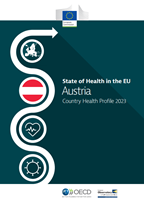The health system is financed by a mix of general tax revenues and compulsory SHI contributions. Income-related SHI contributions account for about 60% of publicly financed health expenditures, while the remaining 40% come from general taxation. Contributions are pooled by the Main Association of Austrian Social Security Institutions (HVB) and are subsequently allocated to SHI funds for payment of health care providers.
Provision of health services in Austria is characterized by relatively unrestricted access to all levels of care including general practitioners, specialists, and hospitals. There is no formal gatekeeping system in place. For ambulatory care, patients can choose between independently practising physicians, group practices, hospital outpatient departments and outpatient clinics. Patients also have the choice between SHI contracted physicians (45%) and those without contract (55%). In general, health care provision remains strongly focused on hospital care.



